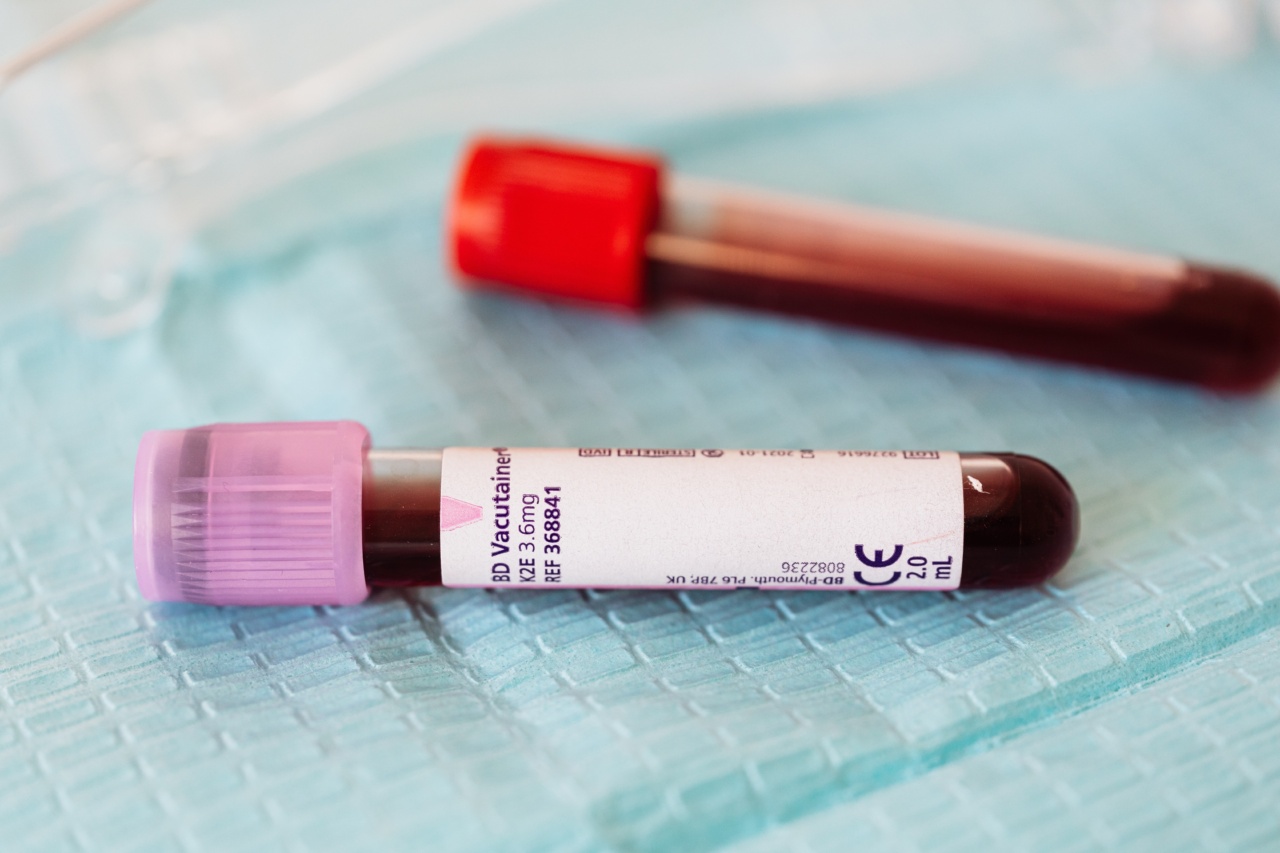Lymphoma is a type of cancer that affects the lymphatic system, which is responsible for fighting infections and filtering fluid in the body. It is the sixth most common cancer in the United States, with over 80,000 cases diagnosed each year.
Early diagnosis and proper treatment are crucial for improving the outcomes for lymphoma patients. Fortunately, advancements in medical technology have led to the development of a new blood test that can significantly benefit lymphoma patients.
What is Lymphoma?
Lymphoma is a cancer that begins in the lymphocytes, a type of white blood cell. There are two main types of lymphoma: Hodgkin lymphoma and non-Hodgkin lymphoma. These types of lymphomas differ in their characteristics and response to treatment.
The Importance of Early Detection
Early detection of lymphoma is essential for improving patient outcomes. The signs and symptoms of lymphoma can be vague and easily confused with other conditions, such as the flu.
Common symptoms include swollen lymph nodes, fatigue, unexplained weight loss, night sweats, and itching. These symptoms can often go unnoticed or attributed to other causes, leading to delayed diagnosis.
The new blood test for lymphoma aims to detect the presence of specific biomarkers that indicate the presence of cancer cells in the body.
By identifying these biomarkers, doctors can diagnose lymphoma at an earlier stage, allowing for prompt treatment and a higher chance of successful outcomes.
The Advantages of the New Blood Test
The new blood test for lymphoma offers several advantages over traditional diagnostic methods. One of the main advantages is its non-invasive nature.
Unlike other diagnostic procedures, such as invasive biopsies, the blood test requires only a simple blood sample. This makes it more accessible and less uncomfortable for patients.
Furthermore, the new blood test is highly accurate in detecting the presence of lymphoma. It has a high sensitivity and specificity, meaning it can accurately identify lymphoma cases and differentiate them from other conditions.
This reduces the chances of misdiagnosis and ensures that patients receive appropriate treatment without unnecessary delays.
Hope for Improved Survival Rates
The ability to detect lymphoma at an earlier stage through the new blood test offers hope for improved survival rates among lymphoma patients.
Early detection allows for timely intervention, which can prevent the cancer from spreading to other parts of the body. With early diagnosis, doctors can develop personalized treatment plans tailored to the patient’s specific subtype of lymphoma.
Additionally, the new blood test aids in monitoring the response to treatment. By regularly testing the blood for specific biomarkers, doctors can gauge the effectiveness of the treatment and make necessary adjustments.
This real-time monitoring enhances the overall management of lymphoma and improves the chances of successful outcomes.
Accessible and Cost-Effective Diagnosis
The accessibility and cost-effectiveness of the new blood test make it a valuable tool in the diagnosis of lymphoma. Traditional diagnostic methods, such as biopsies and imaging scans, can be expensive and require specialized facilities.
In contrast, the blood test can be conducted in a regular laboratory setting, making it more widely available and affordable.
The availability of the new blood test also reduces the burden on healthcare systems by minimizing the need for invasive procedures. Patients can undergo the blood test as part of their routine check-ups or when experiencing symptoms of concern.
This ease of access promotes earlier detection and improves overall patient care.
The Future of Lymphoma Diagnosis
The development of the new blood test for lymphoma represents a significant advancement in the field of cancer diagnostics.
As technology continues to evolve, it is likely that further improvements will be made to enhance the accuracy and efficiency of lymphoma diagnosis.
Researchers are exploring the use of novel biomarkers and advanced genetic testing techniques. These advancements may allow for more precise subtyping of lymphoma, leading to tailored treatment strategies and improved patient outcomes.
Conclusion
The new blood test for lymphoma offers great promise in improving the diagnosis and management of this type of cancer.
Its non-invasive nature, accuracy, and accessibility make it an invaluable tool for healthcare professionals and lymphoma patients alike. Early detection through the blood test can lead to prompt intervention and personalized treatment plans, ultimately enhancing survival rates and improving the quality of life for lymphoma patients.





























